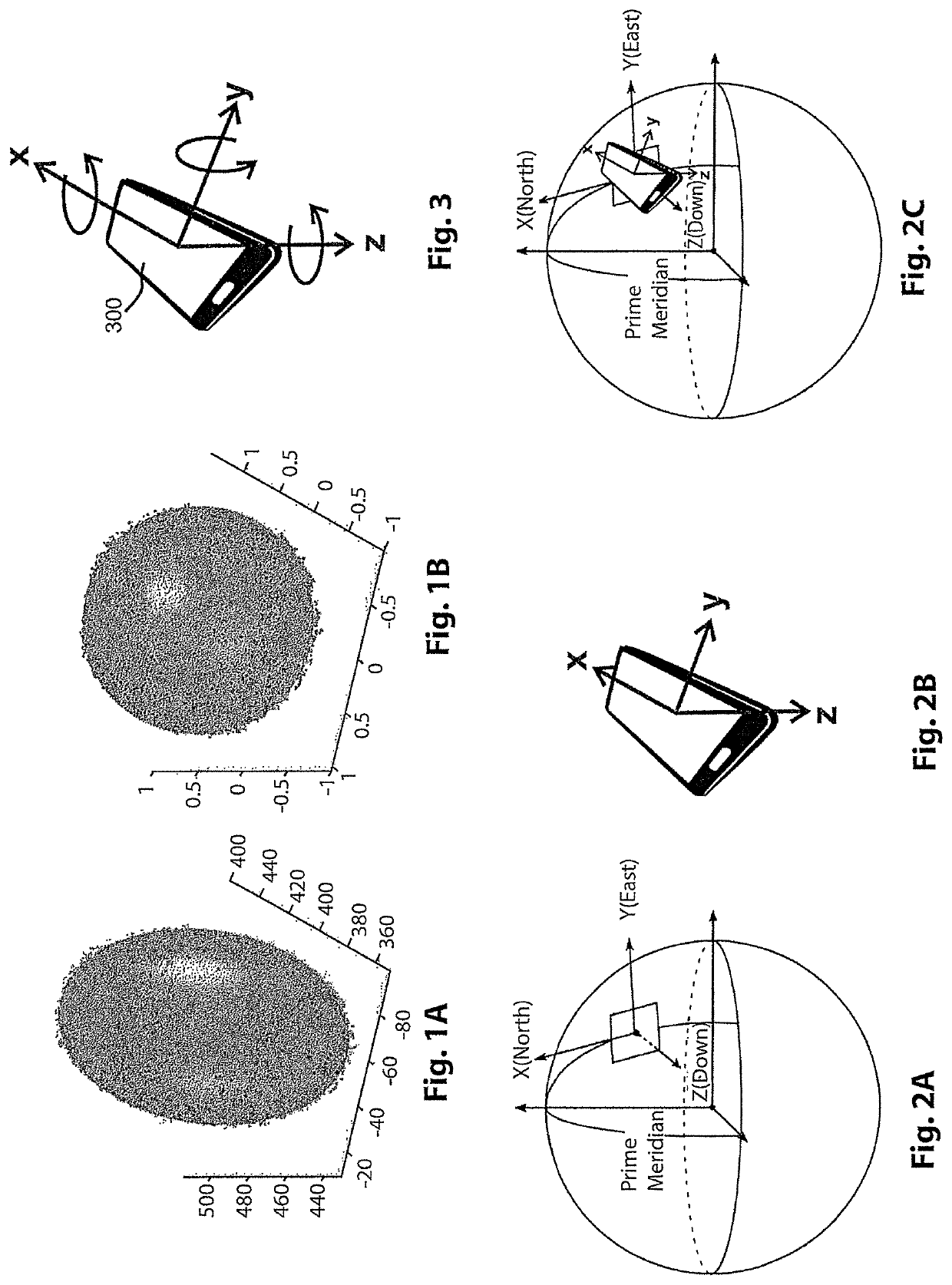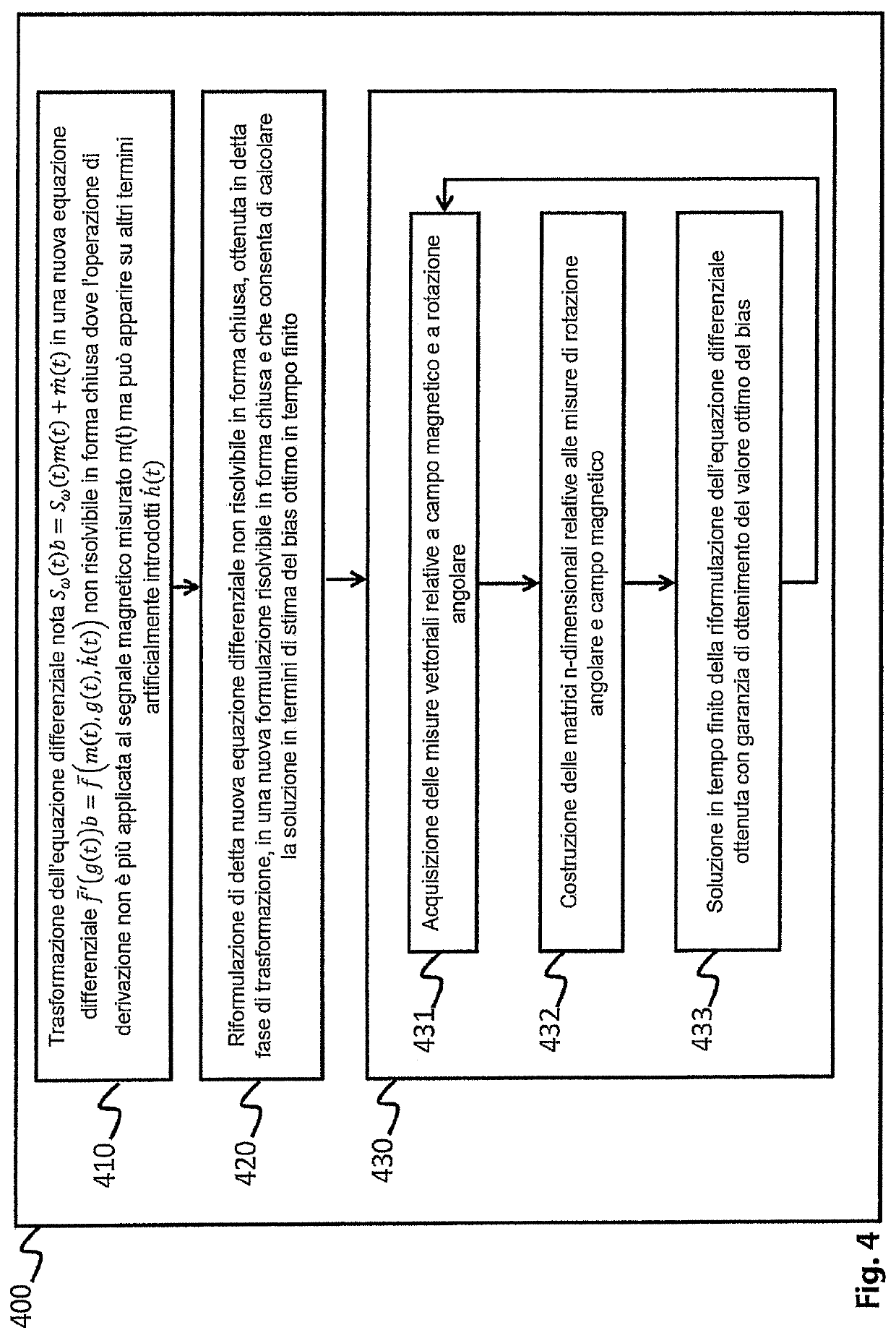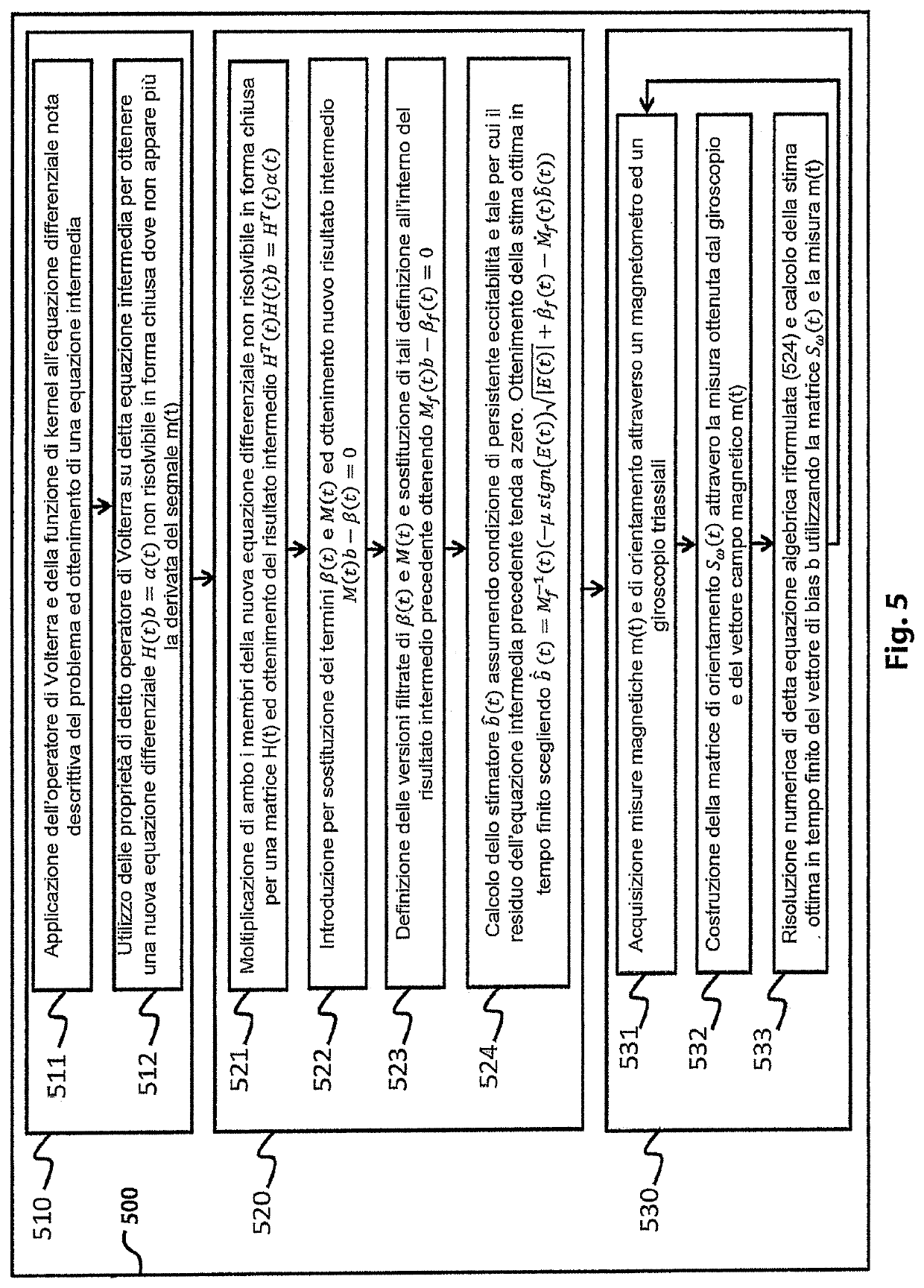System and method for calibrating magnetic sensors in real and finite time
a magnetic sensor and real-time technology, applied in the field of real-time finite-time magnetic sensor calibration system, can solve the problems of inability to use these measures within systems which require a good level of accuracy, reliability and stability, and all the systems described above can be relatively expensive, so as to eliminate or reduce the drawbacks
- Summary
- Abstract
- Description
- Claims
- Application Information
AI Technical Summary
Benefits of technology
Problems solved by technology
Method used
Image
Examples
Embodiment Construction
[0041]Further features and advantages of the invention will become apparent from the description of preferred embodiments, which are not exclusive or limiting, of a method for the real-time and finite-time calibration of magnetic sensors according to the invention, illustrated only by way of indication and not by way of limitation in the accompanying drawings, in which:
[0042]FIGS. 1A and 1B show the locus of the magnetic field measurements acquired respectively by using a uncalibrated magnetometer and a calibrated magnetometer.
[0043]FIGS. 2A, 2B, 2C illustrate the two reference systems. In particular, FIG. 2A shows a known reference system, external to the sensor, and known as the NED (North, East, Down) reference system. FIG. 2B shows a reference system fixed to the device which carries out the magnetic and the angular rotation measurements. FIG. 2C shows said overlapped reference systems highlighting the angles that can be determined between said systems.
[0044]FIG. 3 shows the axe...
PUM
 Login to View More
Login to View More Abstract
Description
Claims
Application Information
 Login to View More
Login to View More - R&D
- Intellectual Property
- Life Sciences
- Materials
- Tech Scout
- Unparalleled Data Quality
- Higher Quality Content
- 60% Fewer Hallucinations
Browse by: Latest US Patents, China's latest patents, Technical Efficacy Thesaurus, Application Domain, Technology Topic, Popular Technical Reports.
© 2025 PatSnap. All rights reserved.Legal|Privacy policy|Modern Slavery Act Transparency Statement|Sitemap|About US| Contact US: help@patsnap.com



